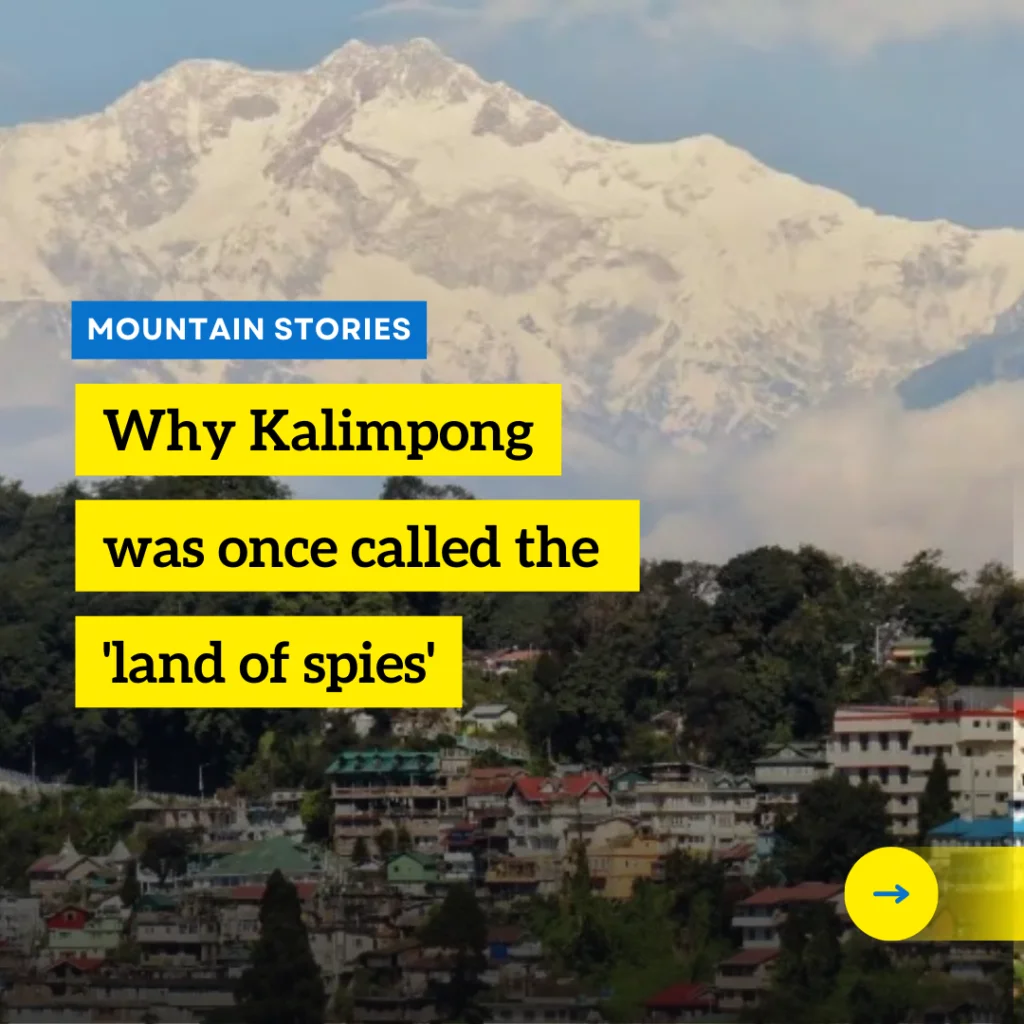Mountain Stories: Kalimpong – the Land of Spies
WhatsApp Channel
Join Now
Kalimpong is today known for its scenic beauty, lush green forests, and pleasant weather, and some beautiful colonial-era architecture. Popular for its orchids and nurseries, Kalimpong offers a unique combination of natural beauty, cultural richness, and floral diversity, making it a must-visit destination for orchid enthusiasts and nature lovers alike.

However, there is another aspect of Kalimpong’s history that has made it famous – it was once known as the “Land of Spies.” The town’s history as the “Land of Spies” is now a distant memory, but it is still a fascinating part of its past.
During the 1950s, Kalimpong was denounced by the Chinese Government and the Chinese media like Peoples’ Daily terming Kalimpong as a hub for espionage and a command centre for Tibetan rebels. Even PM Jawaharlal Nehru declared Kalimpong to be a “nest of spies”
Historically, a centre for trade between the kingdoms of Sikkim, Bhutan, and Tibet, Kalimpong is the point where India connects with the ancient silk route. Kalimpong has centuries-old connection with Tibet, Sikkim, and Bhutan and people from these regions have historically settled and share strong cultural and familial relations.
After the mid-19th century, the British established trade post as Kalimpong was favourably located on the Lhasa-Kolkata trade route. During the British Raj, Kalimpong was an important outpost for the British intelligence agencies, especially during World War II. The town’s strategic location near the borders of Bhutan, Nepal, and Tibet made it an ideal base for espionage activities. The British authorities set up several intelligence networks in Kalimpong, and the town became a hub for secret operations.
One of the most famous spy networks in Kalimpong was set up by a man named Frederick William “Bill” Bailey. Bailey was a British tea planter who had lived in Kalimpong for many years. During World War II, he set up a spy network that operated in Tibet and provided valuable intelligence to the British authorities. Bailey’s network was so successful that it became the model for other spy networks that were set up in Kalimpong.
Another famous spy who operated in Kalimpong was Lawrence “Laurie” Waddell. Waddell was a British soldier who was captured by the Japanese during World War II and later escaped. He then made his way to Kalimpong, where he set up a spy network that operated in Burma and provided valuable intelligence to the British authorities.
Apart from these two famous spies, there were many others who operated in Kalimpong during the war. The town was also a hub for arms dealers, smugglers, and other shady characters, who used Kalimpong as a base for their activities.
Today, Kalimpong is a peaceful and scenic town that attracts tourists from all over the world. Visitors can explore the town’s rich history by visiting the various spy museums and memorials that are located in Kalimpong. Tourists from all over the world come to enjoy this beautiful and peaceful town.
Telegram Channel
Join Now



